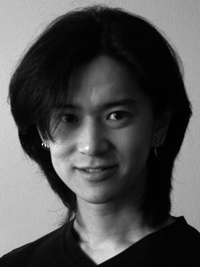| biography |
| resume |
| gallery |
| interests |
| links |
| contact |
|
Yoshitaka Fujii
is a resident artist, instructor, and gallery manager at Baltimore Clayworks in Maryland. Yoshi, from Fukuoka, Japan, moved to U.S. in 1996 and received a B.A. in Foreign Language and a B.A. in Anthropology in 2000 from the University of Southern Mississippi. In addition, he received a B.F.A. in Sculpture with an emphasis in Ceramics in 2002 and an M.A.T.L. in English as a Second Language in 2003. After a residency in Natchez, MS, he attended Southern Illinois University Carbondale where he earned his M.F.A. in Ceramics in 2008. |
 |
Artist Statement Design and function of the work are influenced by my heritage. Porcelain and translucent glazes, such as celadon, historically sustain the value and also suggest the fascination toward elegance and beauty. In the forms of function, I always reference what I saw on the table as I grow up, the seasonal dishes served, and even the relationships with viewer/user. Through the search of my personal identity in the process of making objects, I project myself in the surface designs and patterns extending my inspirations from traditional wood-cut prints and textiles to wrapping papers, advertisement and even tattoos. I am interested in the eclectic inclusions of east/west and organic elements onto utilitarian objects by capturing the seasonal nature beings through carved surface decoration, and also showing the appreciation of production practice with thoughtful designs and keen craftsmanship. As if wrapping a gift or wearing clothing, the ornamentation and celebration of the containment is meaningful for me. A viewer of my work becomes an active user through holding the vessel, feeling its surface, and nourishing their body with its contents. The time that I spend carving and finishing each piece bridges the time that the user spends developing the connections with others. In Japan, especially among the high-class society in the old time, it is a luxury to alternate dinnerware according to the season, and it is my humble desire to share the beauty of this culture hoping that my work can represent a season or even one special occasion of life. |
